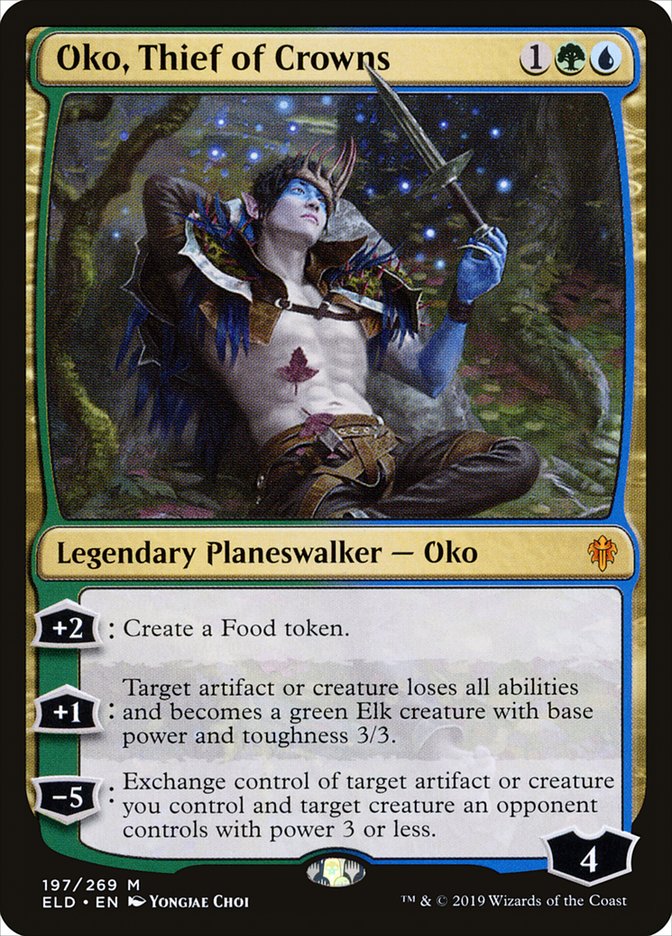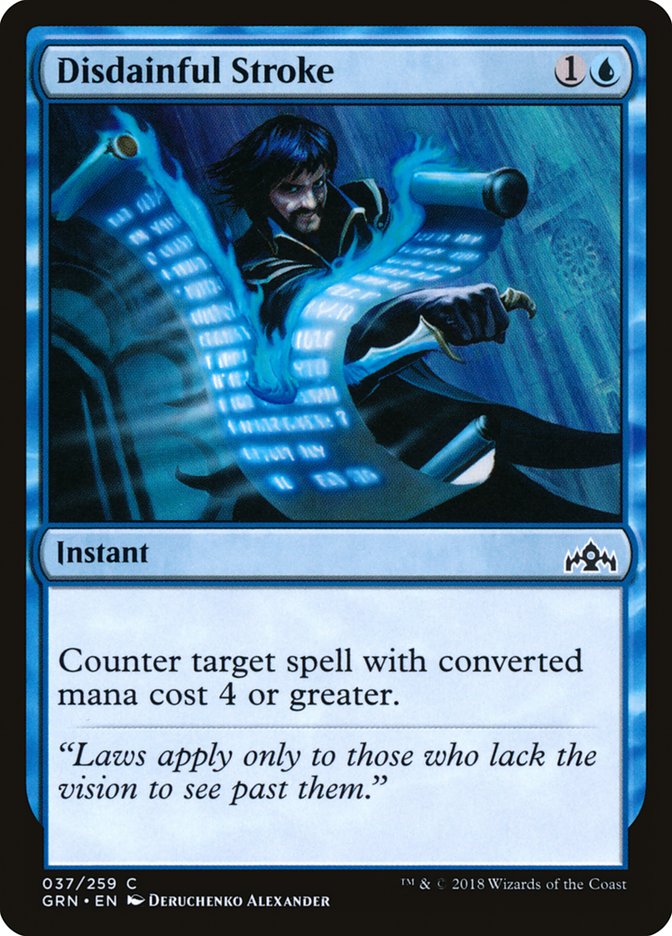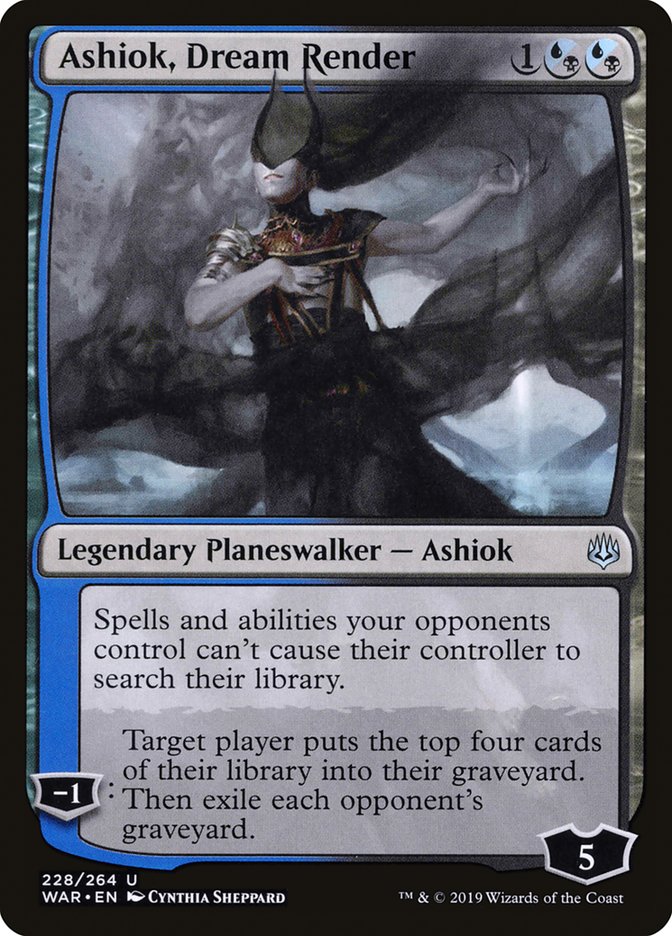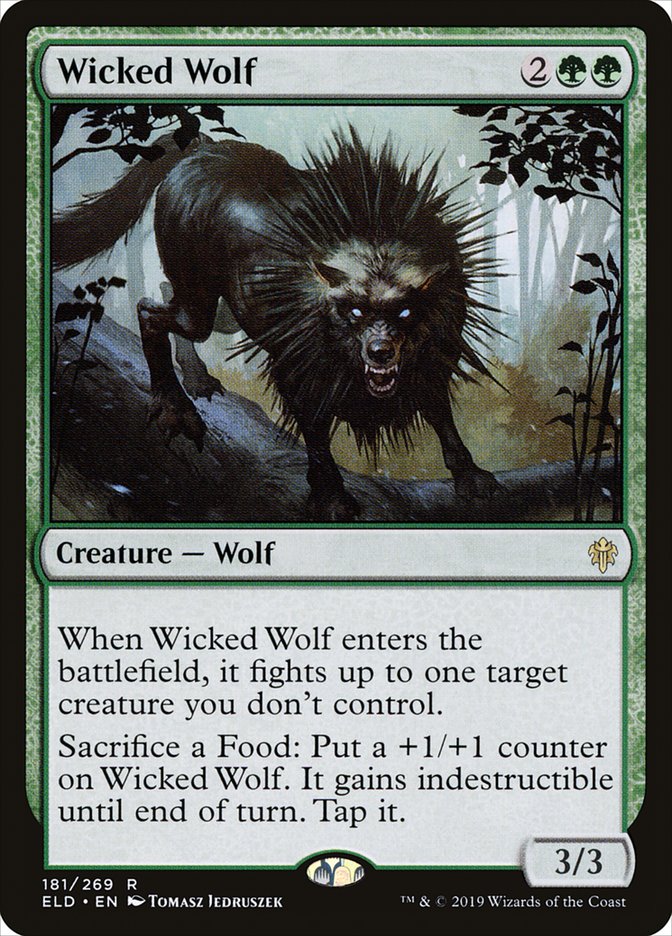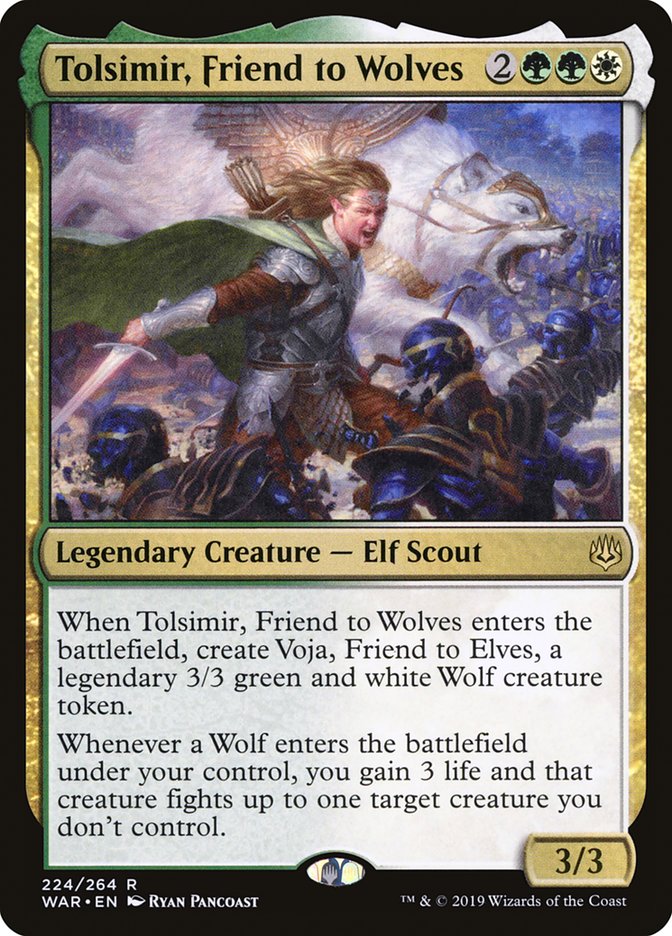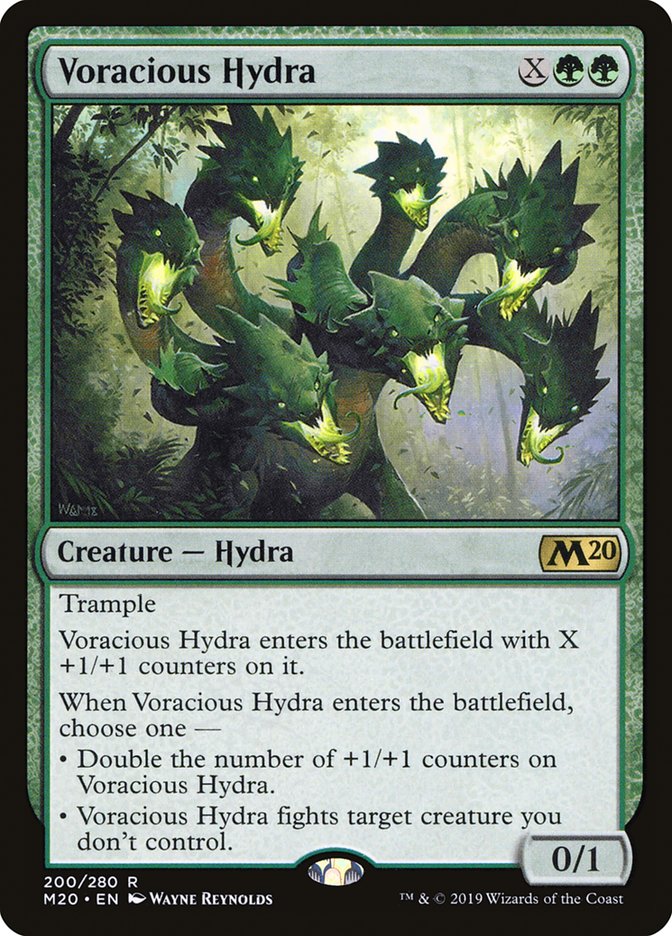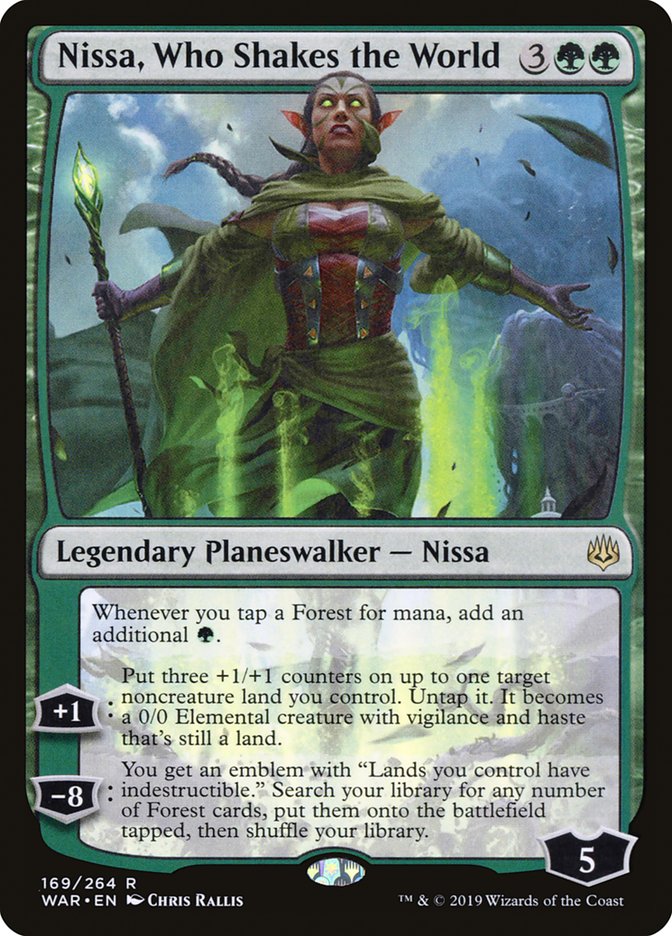Mythic Championship V was supposed to be a cut-and-dried affair, with various adaptations on the Golos shell duking it out for supremacy in grindy hour-long games. Many speculated that this would be a particularly boring Mythic Championship to watch, but it turned out not to be so straightforward.
Several unexpected decks came out of the woodwork to challenge Bant Golos and Golos Fires, the two major sub-archetypes of Field of the Dead decks. Of course, the more aggressively slanted Simic Food and Golgari Adventures decks aimed to leverage Questing Beast to go under the extraordinary late-game power of the Golos decks. Gruul Aggro performed admirably in the hands of Javier Dominguez. As it turns out, the holdover from last season’s onetime “best deck” back during the spring still has legs in the new format.
Additionally, Eric Froehlich, Ben Stark, and Ken Yukuhiro made Mardu Knights happen, while Lee Shi Tian crushed the competition with his innovative take on a Tom Ross-style All-In Red with Cavalcade of Calamity. The deck that caught my eye in the event, though, was the Bant Ramp deck championed by Stanislav Cifka, Ondrej Strasky, Oliver Tiu, Martin Juza, and Grzegorz Kowalski.
Creatures (18)
- 3 Deputy of Detention
- 4 Hydroid Krasis
- 4 Paradise Druid
- 2 Arboreal Grazer
- 1 Agent of Treachery
- 4 Gilded Goose
Planeswalkers (10)
Lands (18)
Spells (14)

Nissa, Who Shakes the World is one of the most powerful cards in Throne of Eldraine Standard, and the rationale to build the deck around her rather than Golos, Tireless Pilgrim is sound. The openings possible with a deck like Bant Ramp can absolutely run roughshod over a deck like Bant Golos before the Golos deck gets its act together. The general structure is something like this:
- Turn 1: Gilded Goose
- Turn 2: Paradise Druid
- Turn 3: Nissa, Who Shakes the World
- Turn 4: Hydroid Krasis for eight mana, draw three cards, keep going…
But the deck also incorporates the most powerful three-mana planeswalker since…actually, I don’t know if there’s been a better one printed, though it’s hard to evaluate, since we’ve gotten inundated with busted planeswalkers all of 2019.
Oko comes down with a hefty four loyalty and immediately moves up to six by making a Food token. It’s basically impossible to kill with normal combat damage in the early turns and runs away with the game if it comes down on Turn 2 via Gilded Goose. It also turns off important creatures from the opponent like Questing Beast, and creates a 3/3 Elk Food every other turn, all while rocketing its loyalty skyward. That’s quite a lot from a simple three-mana card.
The consistency of this deck is also unprecedented in current Standard, what with Once Upon a Time offering over a 50% chance of landing a Turn 1 Gilded Goose. Of course, after sideboard this deck gets better against Golos with Disdainful Stroke (the card that many of the wily metagame sharpshooters actually maindecked this weekend!).
And then with Ashiok, Dream Render, you are able to completely neutralize many of the best cards in Bant Golos, like the namesake creature as well as Circuitous Route. Sometimes the game ends even before it gets off the ground if an opponent is relying on those spells to get them started.
I’m a great fan of decks like this, having played a more ramp-oriented version of Sultai Midrange at Pro Tour Guilds of Ravnica with multiple Incubation Druids and Hadana’s Climb. When you blend midrange and ramp, you often get the best of both worlds, forcing opponents to slow down with spot removal to keep you from curving out and then casting your bombs naturally in the mid-game regardless.
When the small threats in a format are weak relative to the three- and four-mana threats, this is a winning recipe for a Standard metagame. When Oko, Thief of Crowns; Wicked Wolf; Questing Beast; Teferi, Time Raveler; and Deputy of Detention all command the most important spots on the curve, it’s not going to be possible to stick opponents under removal-plus-threat turns that gain massive tempo.
By losing Goblin Chainwhirler and gaining Wicked Wolf as the premier Flametongue Kavu of the format, we’re pushing up towards green midrange arms races.
Hence the aggro decks suffer and have to go towards gimmicky Cavalcade of Calamity decks. To be fair, with the Bant Ramp decks lacking much in the way of cheap removal, it’s easy for a curve of multiple one-drops followed by a Cavalcade of Calamity and a Torbran, Thane of Red Fell to win the game before the opponent can even blink. Not that Lee Shi Tian’s choice is bad, and Bonecrusher Giant does act as a Flametongue Kavu of sorts, but it’s a little more constrained against the ramp creatures, especially Paradise Druid.
Paradise Druid used to be a liability against red aggro in the face of Goblin Chainwhirler, as hexproof didn’t matter against the chains. But now it’s just a monster. Bonecrusher Giant may be an incredible card, but it doesn’t line up quite so perfectly against the Druid. Chalk it up to a shift in answers altering which threats are the best.
Clearly, there were a range of different flavors of Gilded Goose present at the tournament. Cifka and friends weren’t the only ones to recognize this major alternative to the Golos piles. Since these Gilded Goose / Oko decks tend to blend together, we have a spectrum of powerful options to choose from. One could take a step down from Bant Ramp and play a build closer to Andrea Mengucci’s excellent Bant Food list.
Creatures (26)
- 4 Deputy of Detention
- 4 Hydroid Krasis
- 4 Paradise Druid
- 2 Leafkin Druid
- 4 Gilded Goose
- 4 Questing Beast
- 4 Wicked Wolf
Planeswalkers (8)
Lands (24)
Spells (2)

Mengu played Questing Beast and Wicked Wolf, as well as the full four Deputy of Detention, while cutting into his lands and only playing two Once Upon a Time. In exchange, he has Leafkin Druid to increase his ramp potential, offering Goose-Leafkin-Nissa starts.
Personally, I’d cut one of the copies of Questing Beast for a third Once Upon a Time, increasing the consistency of Gilded Goose while reducing the likelihood of getting stuck with copies of the legendary creature in hand. After all, it’s extremely important to get the jump on mana by Turn 3, as the key spells of this deck all cost four or five mana.
The next step down is William Jensen and Gabriel Nassif Simic Food deck, played by a number of well-regarded professional players. This version eschews even Mengucci’s splash for Deputy of Detention and drops the Leafkin Druids for maindeck Disdainful Strokes to fight Bant Golos, as well as the full four copies of Once Upon a Time.
Creatures (20)
Planeswalkers (8)
Lands (8)
Spells (24)

Deputy of Detention seems more powerful to me than Disdainful Stroke, especially when many of the decks in this Standard format actually lack good removal spells. Besides sweeping up Zombie tokens from Bant Golos, Deputy of Detention can easily nab a quick three-for-one against a Simic Food opponent who doesn’t have a Wicked Wolf.
Plus, with all these copies of Hydroid Krasis flying around, Deputy of Detention does a pretty savage job of mopping up these giant beasts with no recourse from any opponent. Even if an opponent has drawn multiple extra cards from the Krasis cast trigger, Deputy of Detention can still prove backbreaking when it clears a battlefield. Protecting planeswalkers for more turns of free value is worth multiple cards, too!
The sideboard options are also a bit stronger for Bant, of course, with Tolsimir, Friend to Wolves offering a supplemental Flametongue Kavu effect for matchups that require that kind of attention. Voracious Hydra for five mana offers a very similar effect, though, so it’s not a particularly important loss.
I must admit, the lack of Agent of Treachery or Mass Manipulation even in the sideboard of the Food decks is a bit surprising. Cifka plays one of each, and these are the kinds of cards that can win games on their own. One Mass Manipulation is the perfect number, because you never want to draw two, but if you have access to ten mana, it essentially wins you the game.
As for Agent of Treachery, it’s a great answer to Field of the Dead, as we’ve seen already. It’s findable via Once Upon a Time, and it does a great job at swinging the game by stealing Nissa or Oko or Hydroid Krasis in close spots.
I understand the desire to be disciplined and refrain from needless greed in deckbuilding, but this strikes me as an oversight from the Food contingent when compared to the Ramp version of the archetype.
What about the weaker enablers in Bant Ramp? Arboreal Grazer and Growth Spiral? Neither of these cards is winning any awards for power level, and unlike Bant Golos, this deck doesn’t have an insurmountable late-game. The point of Arboreal Grazer is to get to Circuitous Route on Turn 3 while throwing a body on the battlefield to buy time. Does it need to be in the Bant Ramp deck?
The point of Bant Ramp was to consistently cast Nissa on Turn 3. For those purposes, yes, you do need the Arboreal Grazers. You need six one-drops to hope to draw in your opening hand or via a Once Upon a Time, and you need enough two-drop ramp spells to consistently prepare yourself for five mana on Turn 3.
But is it worth giving up other angles of attack to improve the percentage of hitting the nut draw? For this tournament, yes, but going forward, it’s possible that a more balanced list is the place to be.
Indeed, if you look at all the green decks in the tournament (and there were a lot), the ladder goes something like this, from most over-the-top to most lean tempo-oriented:
- Golos Fires (only semi-counts as green is fairly light and the deck is more combo)
- Bant Golos
- Bant Ramp
- Bant Food
- Simic Food
- Gruul Aggro (also semi-counts as it’s closer to a red aggro deck than a ramp-midrange deck)
I think Mengucci’s deck does the best job bridging the gap between ramp creatures, midrange interaction, and top-end threats. However, Bant Ramp from the Czechs executes the ramp gameplan with more consistency.
Simic Food preys on Golos with maindeck Disdainful Strokes but suffers against Bant Ramp and the higher density of removal spells (Deputy of Detention and Wicked Wolf compared to just Wicked Wolf).
Any of the three would be a stellar choice for those of you who want to cast Gilded Goose and Oko, Thief of Crowns. And with Field of the Dead banned on Monday, all the better!


